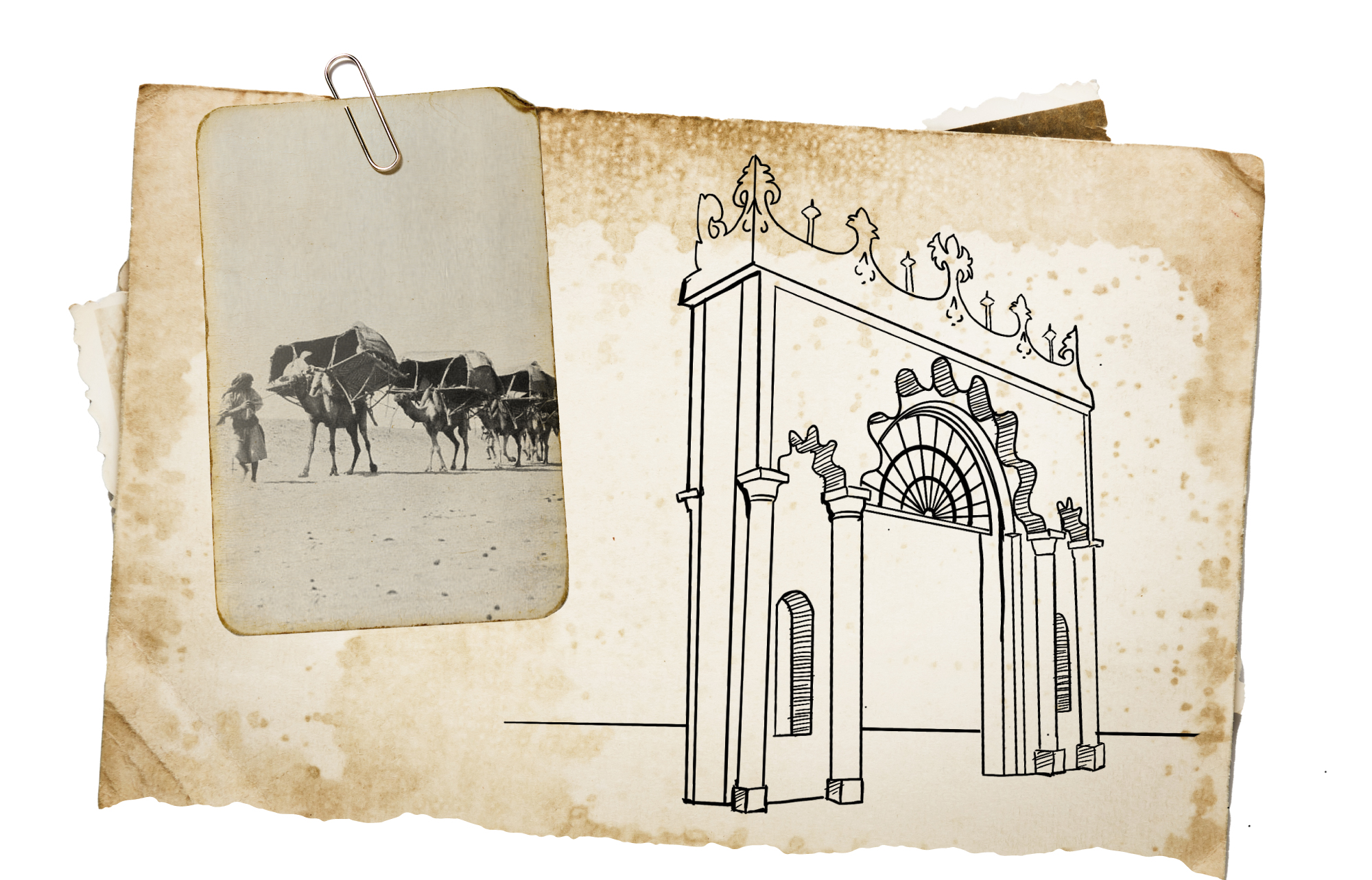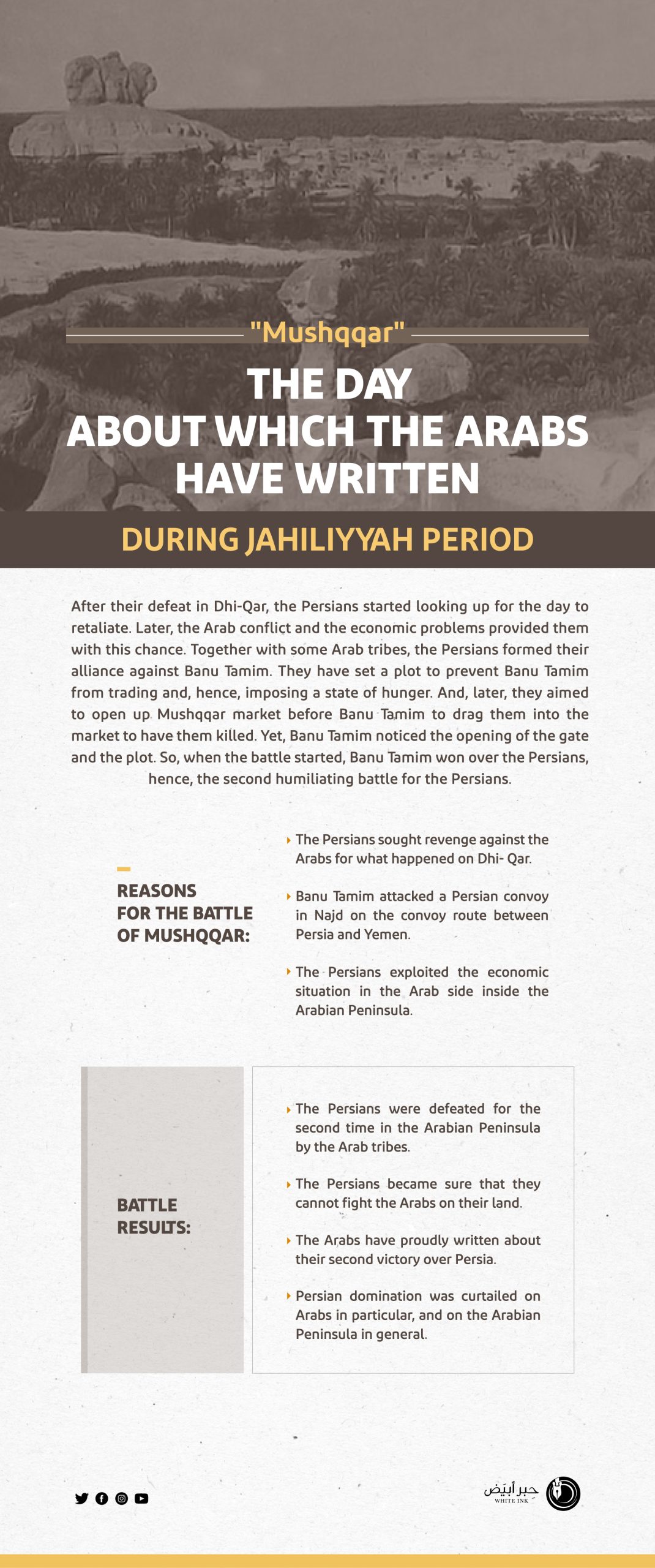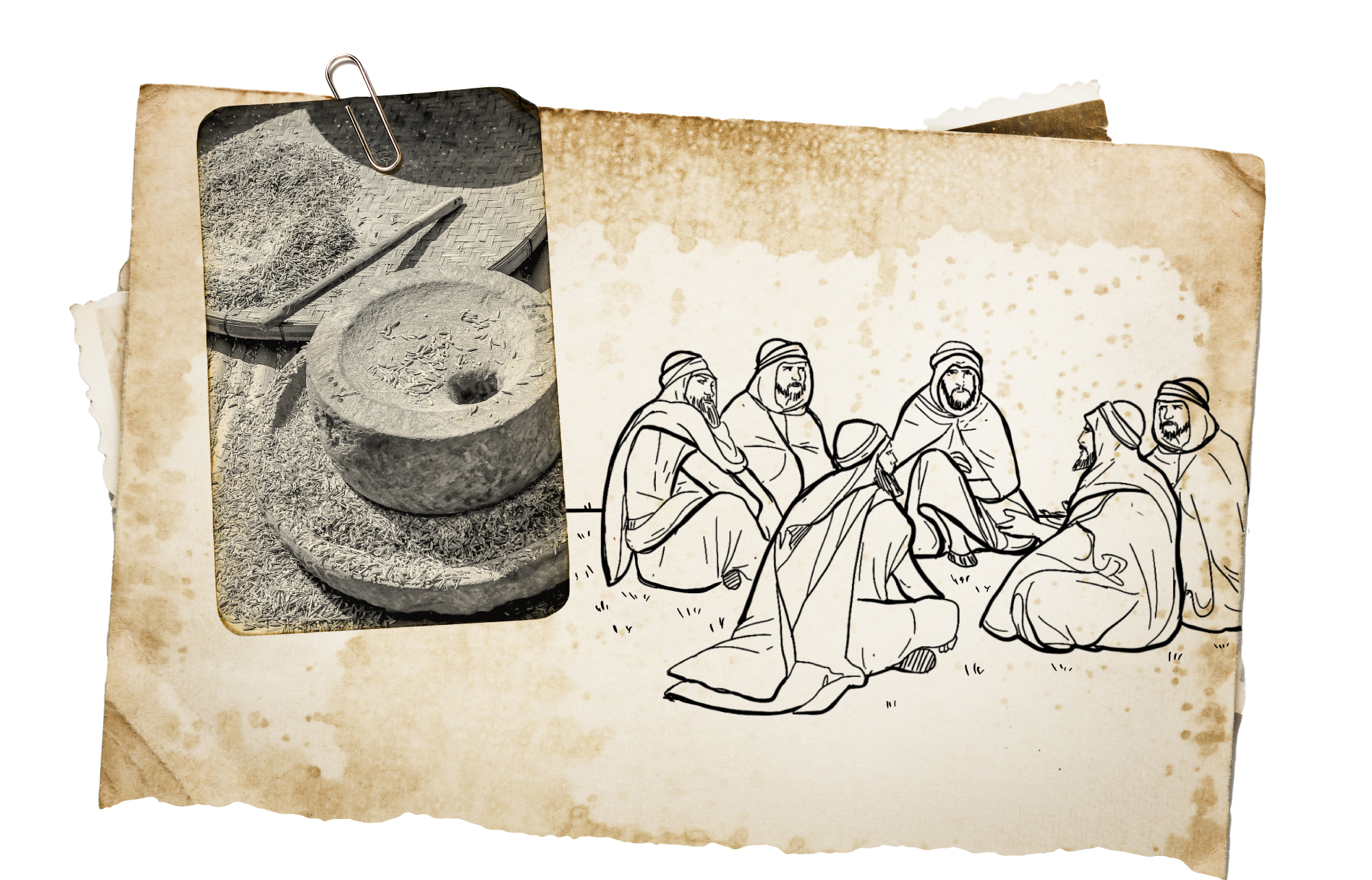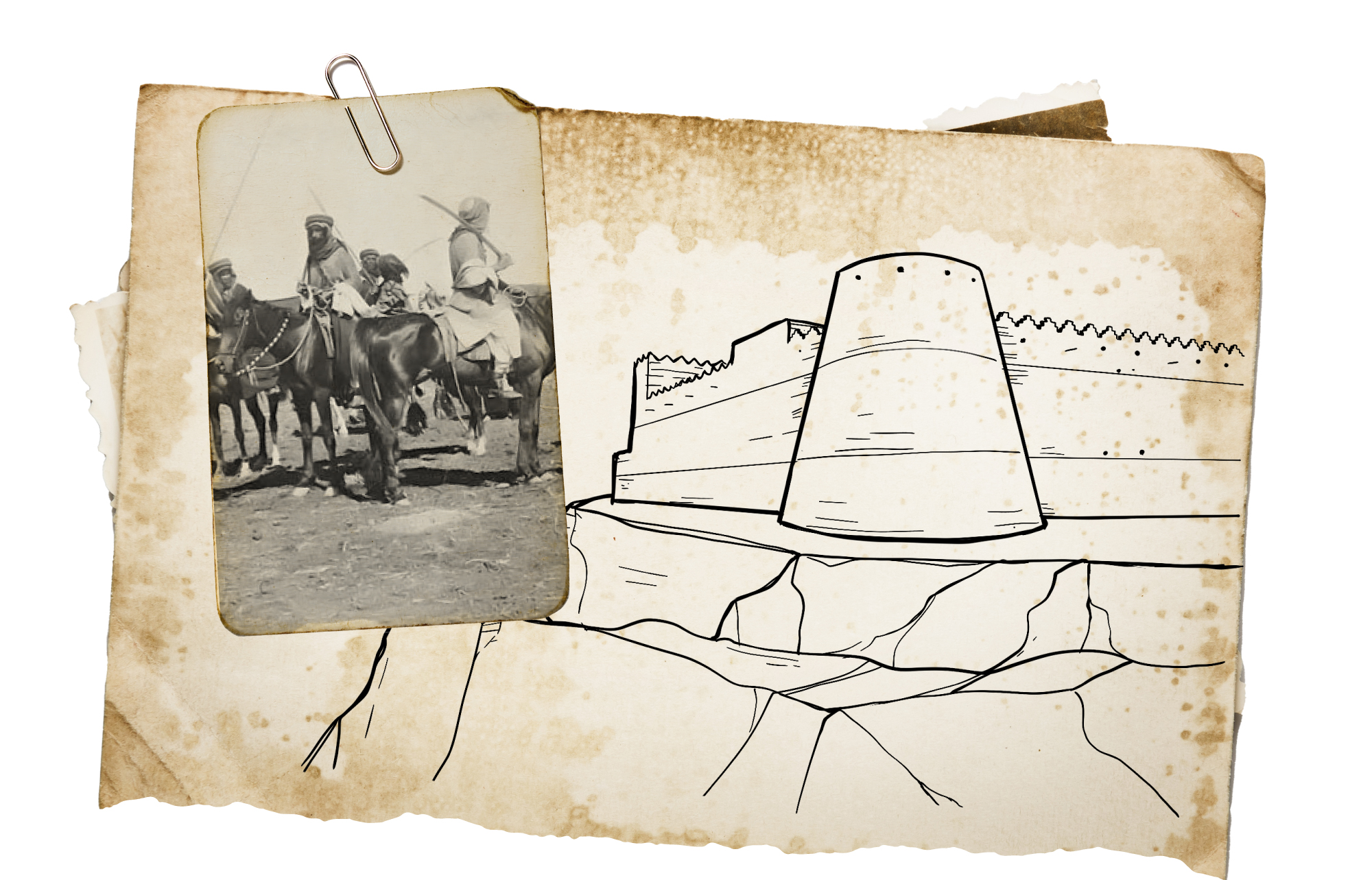
Al-Mushaqar Day “The Slam”
One of the days when the Persians betrayed the Arabs before Islam
Al-Mushaqar day is one of the most important days that the Arabs talked about in the pre-Islamic era, and it is also called the “The day of the Slam”. The importance of this day extended to the history of the beginning of Islam due to its military and literary importance in the history of the Arabs before Islam.
Al-Mushaqar day was named after the fort of Al-Mushaqar, known in the village of Al-Qarah in Al-Ahsa, one of the most important forts in the east of the Arabian Peninsula, and it is one of the forts which ruins have vanished. It is said that it was called “Al-Mushaqar” due to the type of sand that was used in its paint, which is characterized by a tendency to redness. It was also called the day of the slam because of the slamming of the door, as the Persians and their enemies slammed the door of the fort to betray the Arabs of Banu Tamim.
To shed light on the events of Al-Mushaqar Day, it is necessary to return to the movement of trade caravans between Persia and Yemen at the time when Yemen was occupied by the Persians. Abd Al-Wahhab Azzam tells us, based on Al-Isfahani, the author of the book “Al-Aghani”, that trade between Persia and Yemen could not cross the roads of the Arabian Peninsula safely except with the guard of the Arab tribes through this road because the Persian soldiers did not know the desert paths and they could not adapt to the difficult geographical environment. The Persians had to pay mandatory guard fees to the Arab tribes along the road. Azzam says: “Khosrau sent camels to his deputy over Yemen, and Bazan was in charge of the army that Khosrau sent over Yemen. The caravan was carrying supplies, and the guards would go with it from Al-Mada’in until it reached Al-Nu’man, and Al-Nu’man would send guards from Rabi’ah and Mudar until it reached Houza Ibn Ali Al-Hanafi, and he would do the same until it went out of the land of Banu Hanifa, then it would reach Saad (from Tamim). After that, they would send it to the followers of Bazan in Yemen”.
Hussein Mujib Al-Masri indicates that these caravans were carrying important wood for the manufacture of weapons, especially arrows, but the Persians betrayed Banu Tamim after they agreed that others would guard the caravans instead of Banu Tamim, with the new ones taking the guard money allocated to them.
Banu Tamim considered this an insult to them and an assault on their historical role, so they seized the caravans and captured those in charge of them. Khosrau insisted on taking revenge on Tamim, and in this way, he prevented sending “Al-Mira”, meaning seeds, to Banu Tamim for a year, and this year was one of the most barren years. Khosrau was not satisfied with that, but continued his trick in order to deceive Banu Tamim and eliminate them, as he sent a herald from his side to Banu Tamim telling them that Khosrau had forgiven them and sent the seeds and that they should go to the fort of Al-Mushaqar in order to take them.
Indeed, people went to the fort in the hope of obtaining seeds after going through one of the toughest years. Here, Khosrau and his soldiers deceived Banu Tamim as he slammed the door of the fort (closed it) and allowed them to enter only individually, citing that it was for the purpose of regulating entry and obtaining Al-Mira. In fact, the Persians were killing whoever entered the fort without anyone outside knowing what was really going on inside.
Khosrau planned to hold a massacre against the people of Tamim tribe, so he called them under the pretext of forgiveness and killed them individually.

Some were suspicious of the matter, especially since those who entered the fort did not go out. It is said that one of the men of Banu Tamim, called Al-Khaybri, struck the chain of the door with his sword, so the door was opened. The people discovered that a massacre had taken place for everyone who entered the fort. Al-Khaybri wrote poetry on that day (Al-Mushaqar Day) in which he mentioned how he saved the people from the treachery of the Persians:

In this way, the Persians betrayed Banu Tamim. The massacre of Al-Mushaqar day (the day of the Slam) was one of the days of the Arabs before Islam, which remains a new witness to the treachery of the Persians against the Arabs.


- Jawad Ali, The Detailed History of the Arabs Before Islam, 4th Edition (Beirut: Dar Al-Saqi, 2001).
- Hussein Mujib Al-Masri, Relationships between Arabs, Persians and Turks (Cairo: Al-Dar-Althakafia Publishing, 2001).
- Raif Khoury, With the Arabs in History and Legend (Cairo: Hindawi Foundation, 2019).
- Abd Al-Khaliq Al-Janbi, Hajar and its Three townships (Beirut: Dar Al-Mahaja Al-Bayda, 2004).
- Abd Al-Wahhab Azzam, The Links between Arabs and Persians and Their literature in Pre-Islamic Times and Islam (Cairo: Hindawi Foundation, 2012).
- Muhammad Gad and others, The Days of the Arabs in the Pre-Islamic Period (Cairo: House of Revival of Arab Books, 1942).
- Homa Katouzian, The Persians: Iran in the Ancient, Medieval and Modern Times, translated by: Ahmed Hassan Al-Ma’ini (Beirut: Dar Jadawel, 2014).


Al-Mushaqar Day “The Slam” confirms that:
The malice of the Persians against the Arabs is a belief that does not go away with the passage of time
Based on the strategic planning approach developed by the management of “White Ink” website, which aims to move away from the negative historical narrative and focus on “understanding history and analyzing events”, the cognitive goal is to own the mechanisms of analysis and track down the determinants of the behavioral specifics of the Persians in their relationship with the Arabs. Accordingly, work is being done to create a counter-strategic planning, especially since the Persian ambitions in the Arab region have not stopped until today.
From this point of view, the events of Al-Mushaqar Day reflect the persistence of the hostile and racist behavior of the Persians towards the Arabs, but this time using local followers who were able to adopt the Persian project and confront their compatriots to achieve limited self-goals.
It can be said that most Arab historians ignored the events of this day and did not analyze it or extrapolate it from its tactical and strategic aspects. They were satisfied with the limited narration of events, perhaps in view of the results of this black day, in which Khosrau was relatively successful in taking revenge on the Arabs who humiliated him in Dhi Qar.
The day of the slam is nothing but a reflection of the hostile and racist behavior of the Persians towards the Arabs.

About the course of events, historians mention that the day of the slam was because of what Tamim tribe had done when they raided caravans sent by the deputy of Khosrau in Yemen after he reached Natta’ in the land of Najd, so they plundered him and plundered the messengers of Khosrau who fled from Tamim and some Arabs received, treated and helped them.
Khosrau realized the importance of inciting the Arab tribes against each other. The attitude of some Arabs towards the Persians who fled on the day of Tamim’s attack on them was a factor that revived a new strategy for Khosrau in fighting the Arabs by using them against each other, so he summoned those who supported his followers who were defeated by Tamim and agreed with them to start the war against Tamim. On the other hand, the Persians had a purpose to create a state of war among the Arabs in response to what had happened to them on the day of Dhi Qar.
Since the day of the slam, the Persians discovered that provoking war among the Arabs is the best strategy for revenge and control. Therefore, this has become a constant tactic in the Iranian strategy to confront the Arab countries through Safavid Iran’s work to create followers in the Arab region who carry out proxy wars on their behalf and then work to subjugate the Arabs to Iran’s agendas.
The Persians and their Arab allies took advantage of the lack of supplies and water that Tamim was suffering from, so the Persians sent those who invited Tamim to the fort of Al-Mushaqar for the sake of Al-Mira (supplies). That was the plan that succeeded due to a misunderstanding from Tamim tribe and their unawareness of the alliance and massacre awaited them.
On the day of the massacre, those allied with the Persians worked to bring Tamim’s members into the fort, every five together, or every ten together. They were supposed to enter from a door and to leave from another, and everyone who entered had their necks cut off. Al-Mukaa’br ordered to close the door and kill everyone in the city. Thus, Khosrau succeeded in achieving his revenge for the defeat of Dhi Qar.
What happened on Al-Mushaqar Day confirms that the malice of the Persians against the Arabs does not go away with the passage of time, but rather it is a weapon they resort to and raise it to the level of sanctification among the Persians and those who follow them. Therefore, the Persians entrenched a belief of hatred and revenge against the Arabs and tried to stir up sedition among the Arabs and create a hypothetical retaliation in order to create permanent tension between the Arabs to guarantee the presence of Arab followers for the Persians.


- Ibrahim Shams Al-Din, All the Days of the Arabs in Pre-Islamic Times and in Islam (Beirut: Baydoun Publications, 2002).
- Jawad Ali, The Detailed History of the Arabs Before Islam, 4th Edition (Beirut: Dar Al-Saqi, 2001).
- Hassan Pernia, The Ancient History of Iran from the Beginning to the End of the Sassanid Era, translated by: Muhammad Nour Abd Al-Moneim, and Al-Sibai Muhammad Al-Sibai (Cairo: National Center for Translation, 2013).
- Hussein Mujib Al-Masri, Relationships between Arabs, Persians and Turks (Cairo: Al-Dar-Althakafia Publishing, 2001).
- Abd Al-Khaliq Al-Janbi, Hajar and its Three townships (Beirut: Dar Al-Mahaja Al-Bayda, 2004).
- Muhammad Gad and others, The Days of the Arabs in the Pre-Islamic Period (Cairo: House of Revival of Arab Books, 1942).
- Abd Al-Wahhab Azzam, The Links between Arabs and Persians and Their literature in Pre-Islamic Times and Islam (Cairo: Hindawi Foundation, 2012).

Despite the betrayal
“Al-Mushaqar” is the second victory of the Arabs that humiliated the Persians
There are endless stories and experiences in the history of the Arabs and Persians. Although the balance of power was not equal and the situation was in favor of the Persians, the Arabs took advantage of every opportunity they had to take revenge. There were days and battles, most of which revolved around the strong desire of the Persians to subjugate, occupy, and humiliate the Arabs. It is an inferiority complex that has been going on since the famous battle of the “slam” between the Arabs and the Persians, which is called Al-Mushaqar Day. On this day, a major battle took place until it became one of the most famous days of the Arabs in the pre-Islamic era.
At the decisive time, the Arabs repeated their unity on the day of the “slam” as they did on the day of Dhi Qar.

Despite the weak capabilities of the Bedouin man, the son of the Arabian Peninsula, he did not give in to any attempt to occupy. His pride of himself, his origins and his land was beyond description. Describing the Arab who was overwhelmed by the idea of victory over his circumstances and not giving up, the researcher “Amal Kabir” affirms: “The days of the Arabs have turned into legendary epics”.
What happened in Al-Mushaqar Palace is one of those days immortalized in the memory of the Arabs and a true epic. The palace is one of the most famous buildings of the pre-Islamic era and is the most famous fort in Hajr. The fort is located in the eastern region of the Kingdom of Saudi Arabia in Al-Ahsa, to the east of the city of Al-Hofuf, in a village known as the village of Al-Qarah. The fort was built on top of Al-Mushaqar hill, known to the people of the region as Ras Al-Qarah, and it contains Hajr spring, now known as Al-Khasif spring. There are no visible traces of the fort as it disappeared over time, but there are evidences and indications of its existence on which the researcher Abd Al-Khaliq Al-Janbi based his theory of locating Al-Mushaqar. The fort was called Al-Mushaqar because it was painted with red sand, a type of red sand known for its hardness and strength. Historians differed about who built the wonderful red fort, but there are narrations that indicate who built the palace and the fort revolving around Banu Abd Al-Qays, but their poems indicate that they came to the area after the construction of Al-Mushaqar. Some of them also said that it is Kinda tribe, and it was said that it is Tasm tribe. The last saying is the most likely one for the presence of historical evidence, including what was recorded by Ibn Salam that Tasm tribe inhabited before Banu Abd Al-Qays and Kinda, and it was the one that built this building and was building great palaces.
About the events of Al-Mushaqar day, and it was due to the road of the caravans coming from Persia passing through the Arabian Peninsula, where Khosrau had control over the Al-Mushaqar market, and he had sent camels to his deputy in Yemen, as the narrations say. The caravans of Khosrau were protected by the fighters from Al-Mada’in until they reached Al-Nu’man Ibn Al-Mundhir in Al-Hira. Al-Nu’man used to protect them from Banu Rabi’ah until they reached Houza Ibn Ali Al-Hanafi at Al-Yamamah, so he would protect them until they went out of the land of Banu Hanifa, then they reached Banu Tamim, and they used to receive a reward, so they would proceed with them to Yemen, and they were handed over to the deputies of Khosrau in Yemen.
In a research published by ASharq Al-Awsat newspaper, it was narrated that Dr. Afif Abdulrahman said in his book “Poetry and the Days of the Arabs in the Pre-Islamic Era”: “Al-Mushaqar day, which is also known as the day of the slam, was between Tamim and the Persian deputy in Yemen. Bazan, the deputy of Khosrau in Yemen, sent a caravan carrying clothes and musk to Khosrau, but Banu Hanzalah Ibn Yarbou’a intercepted the caravan and killed its guards in a place called Haradh”.
After the defeat that Banu Tamim inflicted on the Persian caravan, the Arabs who benefited from the protection of the caravans went to the Persian followers that were plundered and released by Banu Tamim. They helped them and gave them clothes. After that, some of those Arabs went to Khosrau and agreed with him to fight Tamim. However, those Arabs warned Khosrau that this land is stronger than his followers and soldiers, and he would not be able to conquer it. They suggested preventing Al-Mira from Tamim until their condition worsens.
According to the plan that some Arabs set for Khosrau, when Tamim’s condition worsens, Khosrau sends his soldiers to the Al-Mushaqar market, and thus he can take revenge and slaughter everyone who comes from Banu Tamim to the market. Khosrau did what the Arab allies advised him to do, and forbade Al-Mira for a year, then he sent to them a thousand of his soldiers led by a man called Al-Mukaa’br. They walked until they reached Al-Mushaqar and set up a market for Tamim tribe to come and buy their needs from the market.
Tamim was betrayed by the Persians and their allies, and Khosrau took revenge on them after the gate of the fort was closed after groups of shoppers entered through Al-Mushaqar door. They made them enter individually so that the man would be taken to the Persian leader, Al-Mukaa’br, and his neck would be struck after he had been stripped of his weapon before he entered.
During that, a man from Banu Tamim named Al-Khaybri Ibn Ubadah noticed his people entering and not leaving. He said: “O people, where is your intelligence? What happens after a weapon is stripped is killing”. He took a sword and struck a chain that was at the door of Al-Mushaqar, cutting it off and cutting off the hand of a man who was standing next to it. The door opened and they found people being killed. Banu Tamim entered the fort, and a battle took place in which the Persians were defeated.
Tamim did not fight the Persians alone, but the Arabs who came to buy from the market participated too. They fought with Tamim until they defeated the Persians and their Arab allies. Therefore, it is considered one of the hardest days for the Arabs in the pre-Islamic era.


- Ibrahim Shams Al-Din, All the Days of the Arabs in Pre-Islamic Times and in Islam (Beirut: Baydoun Publications, 2002).
- Hussein Mujib Al-Masri, Relationships between Arabs, Persians and Turks (Cairo: Al-Dar-Althakafia Publishing, 2001).
- Abd Al-Khaliq Al-Janbi, Hajar and its Three townships (Beirut: Dar Al-Mahaja Al-Bayda, 2004).
- Ibn Abd Rabbo Al-Andalusi, Al-Iqd Al-Farid, investigated by: Muhammad Al-Arian, 2nd Edition (Cairo: Al-Istiqama Press, 1953).
- Afif Abdulrahman, Poetry and the Days of the Arabs in the Pre-Islamic Era (Hail: Dar Al-Andalus, 1984).
- ASharq Al-Awsat newspaper, Al-Mushaqar, a strange-shaped hill inhabited by the giants and located in the middle of Al-Ahsa Mountain (Al-Qarah Mountain), Issue. 9371 (2004).




